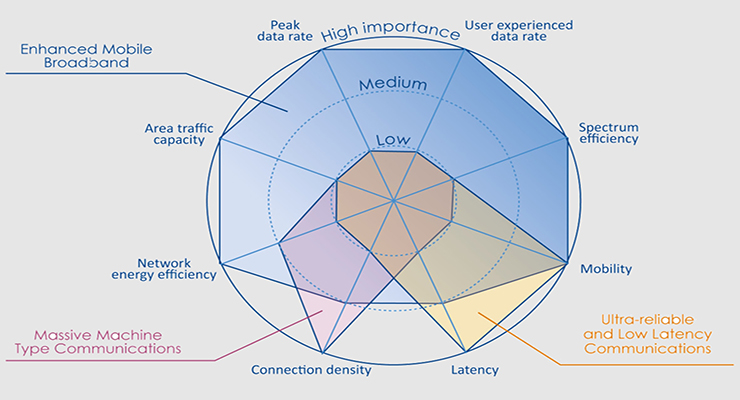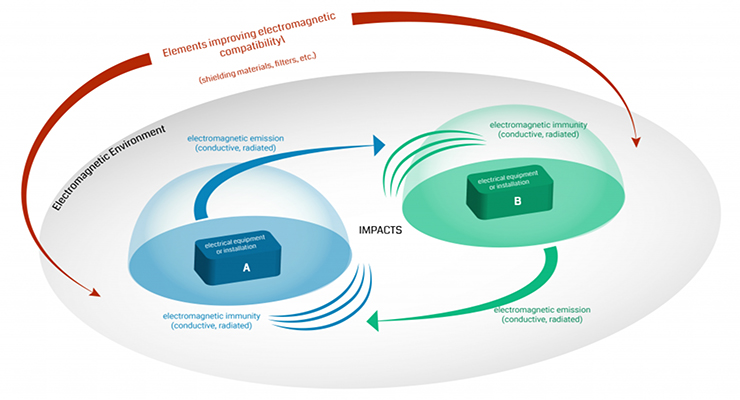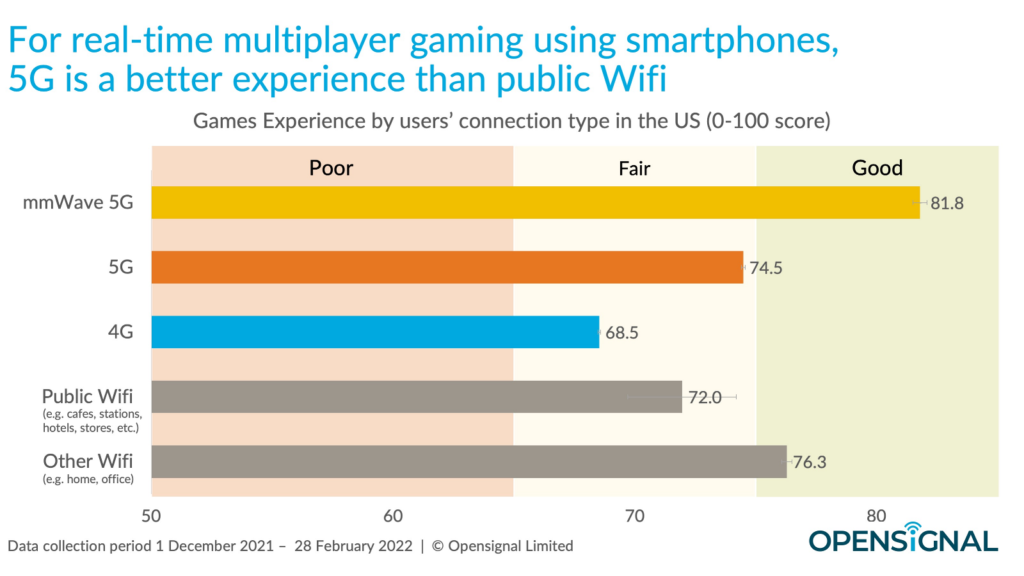5G and IoT applications often involve high densities of devices operating on similar frequencies. Designers of electronic devices must carefully minimize electromagnetic interference (EMI) and ensure electromagnetic compatibility (EMC).
Minimizing electromagnetic susceptibility (EMS) is also crucial for 5G and IoT devices to protect them from potential cumulative effects of EMI or EMC underperformance.
Compared to fourth-generation 5G (IMT Advanced), fifth-generation devices (IMT 2020) have significantly increased connection density, up to 106 devices per square kilometer, and reduced latency from 10 to 1 ms. These changes are most noticeable in two primary 5G application areas:
- Massive Machine-type Communications (mMTC) for the IoT, requiring low power consumption and low data rates for numerous connected devices.
- Ultra-reliable and Low Latency Communications (URLLC) for safety-critical and mission-critical applications.

Figure 1. The performance demands of mMTC and URLLC applications can make controlling EMS especially important. (Image: ETSI)
What are the risks?
EMI can impact low-latency communication in various ways:
- Noise in the signal can lead to increased retransmission needs, slowing down communications.
- Corrupted data packets require more extensive data retransmission, increasing latency.
- Misalignment of timing and synchronization signals can also contribute to latency issues.
Conducted vs. radiated
Noise and interference can occur through conducted and radiated mechanisms, as shown in Figure 2. Conducted emissions are typically associated with low-frequency interference, while radiated emissions pose challenges at higher frequencies. Additionally, the uneven distribution of devices in fifth-generation 5G networks can lead to interference “clumps.”

Figure 2. Radiated emissions can be especially challenging with 5G and IoT devices. (Image: Sierra Circuits)
Higher frequencies
The shift to higher frequencies presents new challenges for designers, as current EMC testing standards may not cover frequencies up to 90 GHz. Shielding materials, complex circuit board designs, and specialized testing equipment are needed to address these challenges effectively.
Unlicensed frequencies
Utilizing unlicensed frequencies for IoT devices can worsen EMC issues due to varying electromagnetic environments and a lack of coordination between devices. This can result in signal degradation, unreliable transmissions, and dropped connections.
Potential solutions
Addressing EMC challenges in 5G and IoT devices requires optimizing PCB design, co-designing filtering and shielding, antenna placement optimization, power management, and thorough testing throughout the design process.
Summary
Designing and deploying 5G and IoT devices for mMTC and URLLC applications pose significant challenges, including increased device densities and lower latencies. Solutions such as optimized design and testing can help optimize device performance.
References
Electromagnetic Compatibility (EMC), Vectornav
How to Prevent Electromagnetic Interference From Ruining Your Devices, TT Electronics
How Will 5G Development Impact EMC Susceptibility Testing?, Ametek
IoT Devices and EMC: Ensuring Connectivity Without Interference, FasterCapital
Review of the EMC Aspects of Internet of Things, IEEE Transactions on Electromagnetic Compatibility
The Challenges of Achieving EMC in IoT Applications, Cadence
Upcoming Issues and Solutions in EMC, Technical Textiles
Utilization of 5G Technologies in IoT Applications, MDPI sensors
Why do we need 5G?, ETSI
WTWH related links
The basics: What is EMC?
EMI control for power and signal lines
Can dielectric waveguide antennas boost 5G efficiency?
Certify your 450 MHz IoT devices
Test tool simplifies and automates LoRaWAN certification



